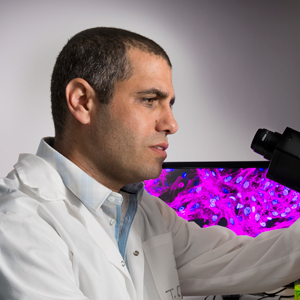About the project:
Myocardial infarction (MI; heart attack) is associated with sudden death as well as significant morbidity and mortality. MI results from blockage of one of the coronary arteries that supply the cardiac tissue, leading to ischemia of a segment of the heart. This process eventually leads to the death of contractile cells and the formation of a scar tissue. Since cardiomyocytes cannot proliferate, the cardiac tissue is unable to regenerate, leading to chronic cardiac dysfunction. Cardiac tissue engineering has evolved as an interdisciplinary field of technology combining principles from the material, engineering and life sciences with the goal of developing functional substitutes for the injured myocardium. Rather than simply introducing cells into the diseased area to repopulate the injured heart and restore function, cardiac tissue engineering involves the seeding of contracting cells in or onto 3-dimensional (3D) biomaterials prior to transplantation.
Following implantation and full integration in the host, the scaffold degrades, leaving a functional cardiac patch on the defected organ. However, once the 3D cardiac patches have been engineered, in vitro assessment of their quality in terms of electrical activity without affecting their performance is limited. This situation might lead to implantation of cardiac patches with limited or no potential to regenerate the infarcted heart. Therefore, engineering an implantable tissue that can provide information on its own function and actively intervene with the tissue function would contribute immensely to the success of this tissue engineering approach. In this research we focused on the development of a method in which recording and stimulating electrodes were simultaneously 3D printed together with extracellular matrix (ECM)-based hydrogel and cardiac cells to generate a microelectronic cardiac patch (microECP). To this end, we developed a unique formulation of autologous, thermoresponsive ECM-based hydrogels, originated from decellularized omental tissue, which can be easily and safely extracted from the patient.
